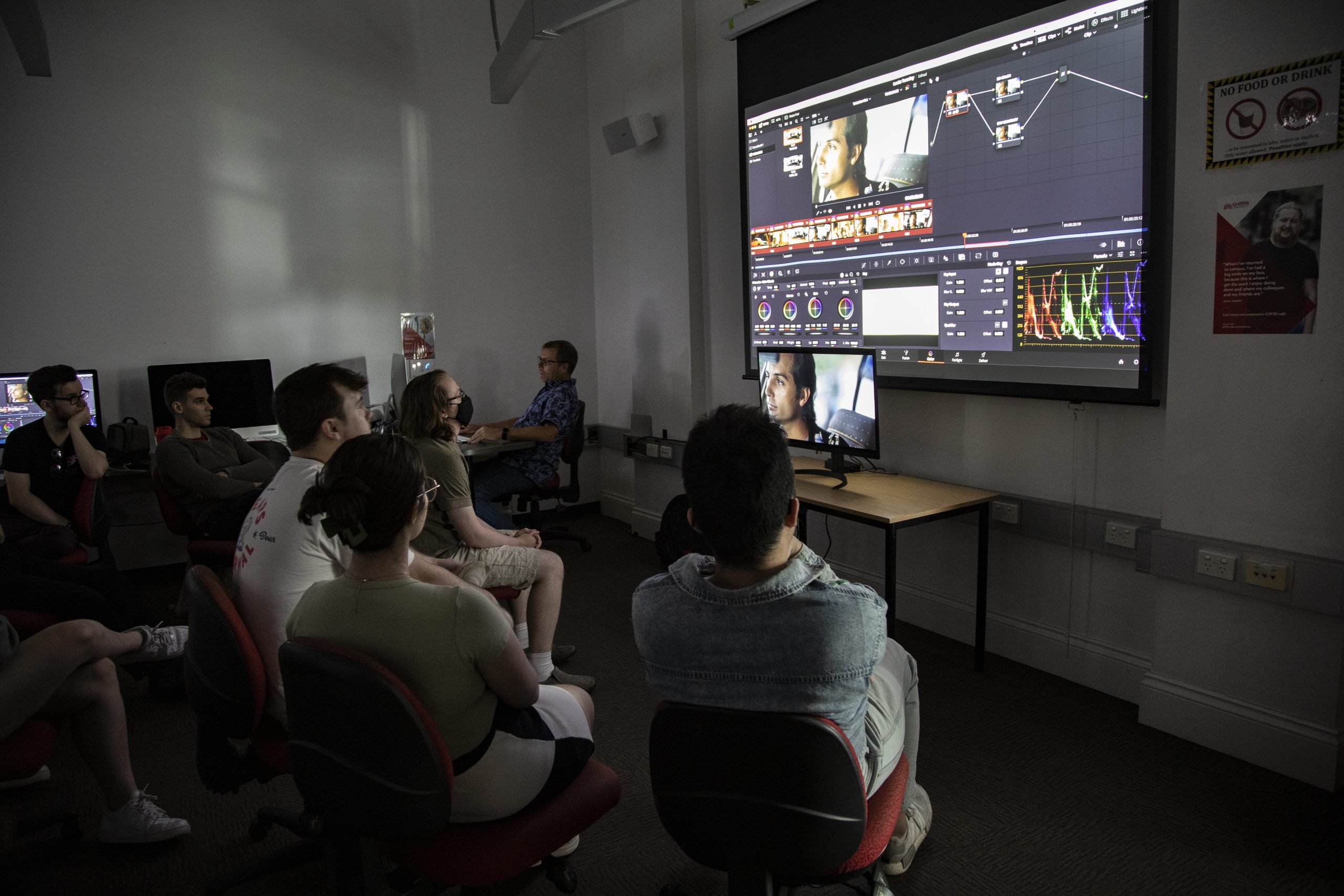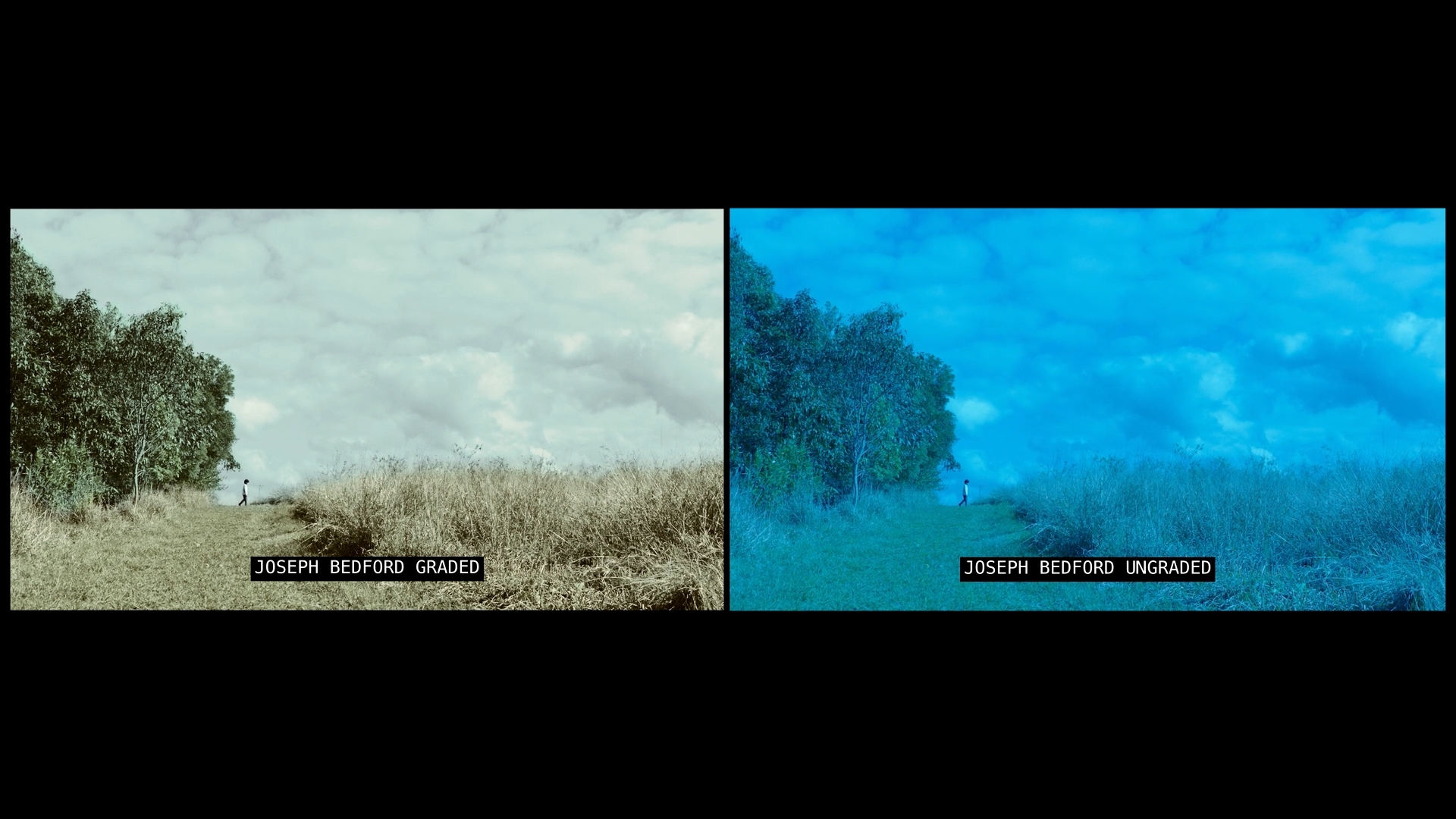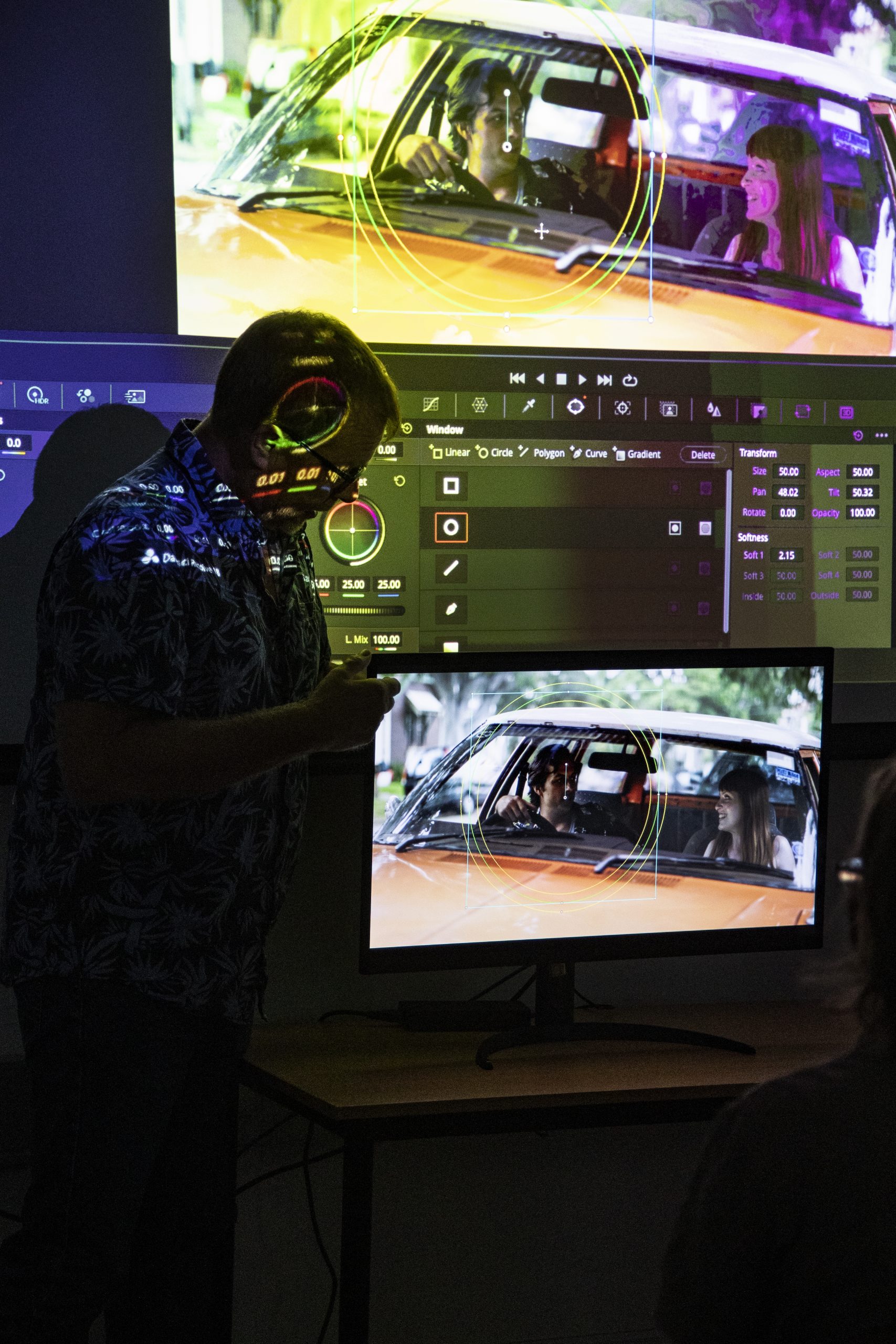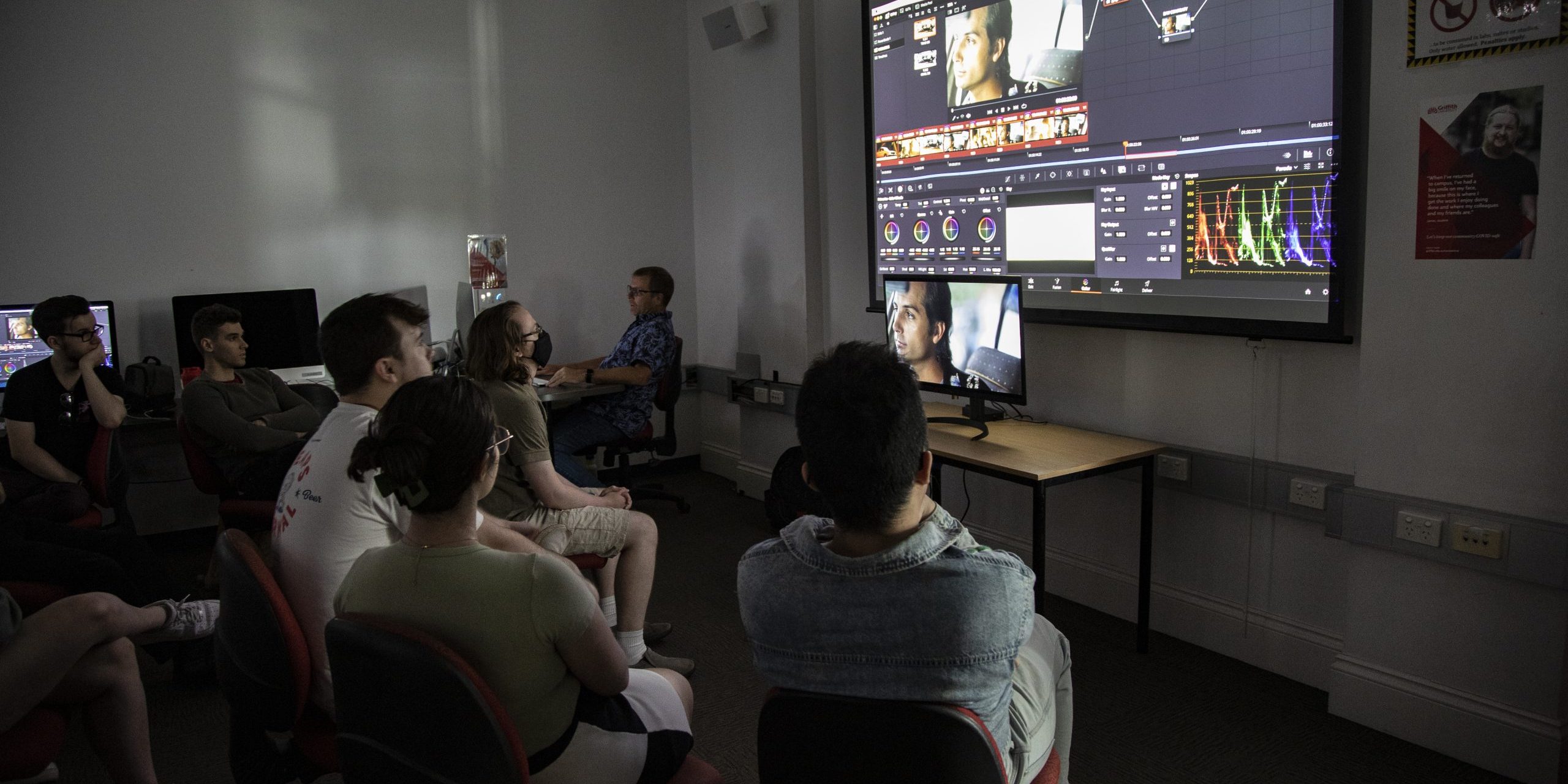Color Grading at Griffith Film School 2022
It was great to be back at Griffith’s South Bank campus in Brisbane during November
The Mac Lab
The course included a five day Colorist Strategies class in the university’s Mac lab. This course is a 7 day complete overview of Color Correction using DaVinci Resolve. The software, the art and the workflows, were all subjects covered as I tried to make the class as ‘real world’ as possible. This also included a 60 minute multiple choice quiz and a 90 minute grading pressure test and a theatre presentation day. We also made time for a grading Happy Hour each day where the students could color and work on any area or footage they wanted to. A great session for asking more personal grading related questions.

The 30 question Quiz (30 Marks)
This is based on everything we have done or covered in the classroom. It could have also been covered in the Power Point presentations or movie examples.
The 90 Min Pressure test (20 Marks)
Students had 90 minutes to conform and grade a 40 second sequence, 2 ways. A standard REC709 balance version and a ‘Look’ pass that included day for night and ‘Magic Hour’ footage. They then had to render both versions and submit them for marking all in the allotted time frame.
The GFS Grading Rooms
When not in the training lab, students got access to the x2 grading suites, both utilising the LG OLED Pro EP950E reference monitors. These rooms are also equipped with Resolve Studio. Correct monitoring is vital when conducting advanced Video Noise Reduction and OFX work. The students mainly worked on their 1 min grading submissions but it also doubled as a great introduction for those who would be grading their 3rd year graduation films or future projects. The grading rooms needed to be booked like a real post facility.
The 1 Minute Submission (50 marks)
Conducted in the Griffith Film School theatre, with each student presenting three minutes of footage of their own choice. It could be either their own footage or taken from the iColorist training material supplied during the class.
- One minute ungraded.
- One minute graded.
- One minute side by side of the ungraded v graded.
 Each student had to talk about why and how they graded their 1 minute selections. I was looking for a good knowledge of the software, the ability to match a short sequence and create a ‘Look’ over a series of clips.
Each student had to talk about why and how they graded their 1 minute selections. I was looking for a good knowledge of the software, the ability to match a short sequence and create a ‘Look’ over a series of clips.
The presentation put them on the spot, but that is what it will be like in the real world, not just in coloring. Being able to explain their work to an audience is a skill valued in almost any field.
 These students will mostly be grading third year graduation short films in 2023. I hope that in a small way I have helped de-mystify Color Grading for them and at the same time pushed the quality of all Griffith films.
These students will mostly be grading third year graduation short films in 2023. I hope that in a small way I have helped de-mystify Color Grading for them and at the same time pushed the quality of all Griffith films.
Color Grading history at Griffith Film School
In 2011 I visited Griffith Film School in Brisbane for the first time, conducting a one-hour lecture on Color Grading. The next year it was two hours and I showed them Resolve. The students had mostly never seen a real color corrector before; they graded their graduation films with FCP7, Avid and After Effects.
In 2013 I spent 60 minutes with the designated colorist of each group making a graduation film. One out of 10 films used Resolve for Color.
By 2014 Griffith added Color Grading as a third trimester elective, it was a three-day Lab class very similar to my ICA Colorist Strategies class.
In the following years the relationship and the class structure continued to develop. In 2016 we shot two 90 second scenes – a courtroom drama and an exterior escape lifestyle sequence. Each film was shot with different cameras, not always with the correct exposure, Color Temperature, color space etc. The students were then tasked with correcting this difficult footage in two hours.
By 2022 Griffith added the LG EP950E grading monitors. This has raised the level of the GFS rooms to a small Post House level.







